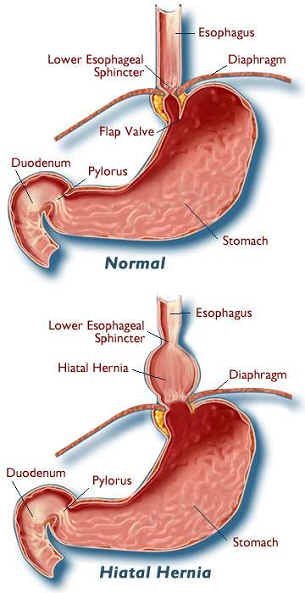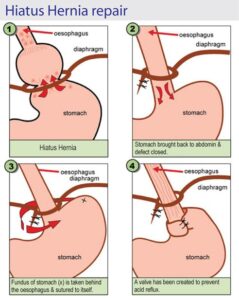Hernia is a bulging of abdominal organ through a weakened muscle area. Except for Congenital umbilical (naval) hernia, all hernia increase in size over a time. Best hernia doctor in Ahmedabad has experience in treating all the below types of hernias:
Hiatus or diaphragmatic hernias occur when a part of stomach protrudes through the diaphragm (the muscle that separates the chest region from the abdominal area) via the opening through which the esophagus (food tube) passes into the stomach.
Incisional hernias occur when a piece of intestine protrudes through a weakness in the abdominal wall in an area where surgery has been performed.
Umbilical hernia is found in the area of the umbilicus (the navel or belly button area).
Inguinal or groinhernias occur when part of the abdominal contents (usually part of the intestine or a piece of bowel) protrudes into the groin area.
Femoral hernias occur when a piece of intestine protrudes though the passage that is normally used by large blood vessels as they pass between the abdomen and leg.









